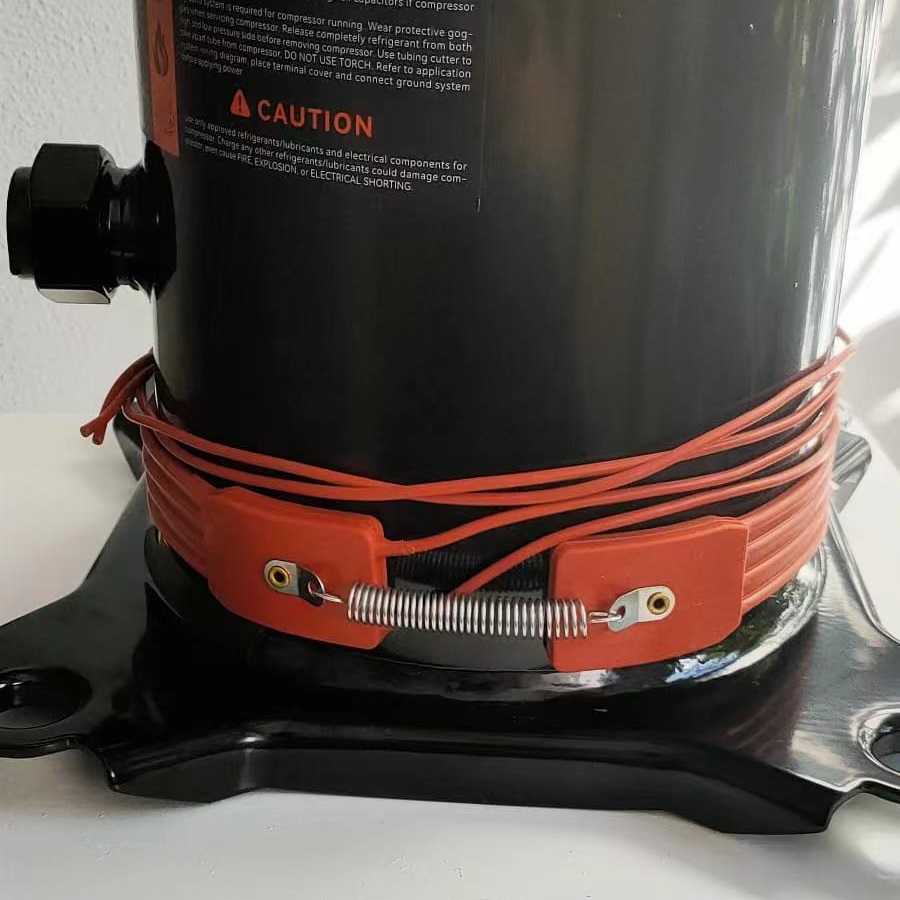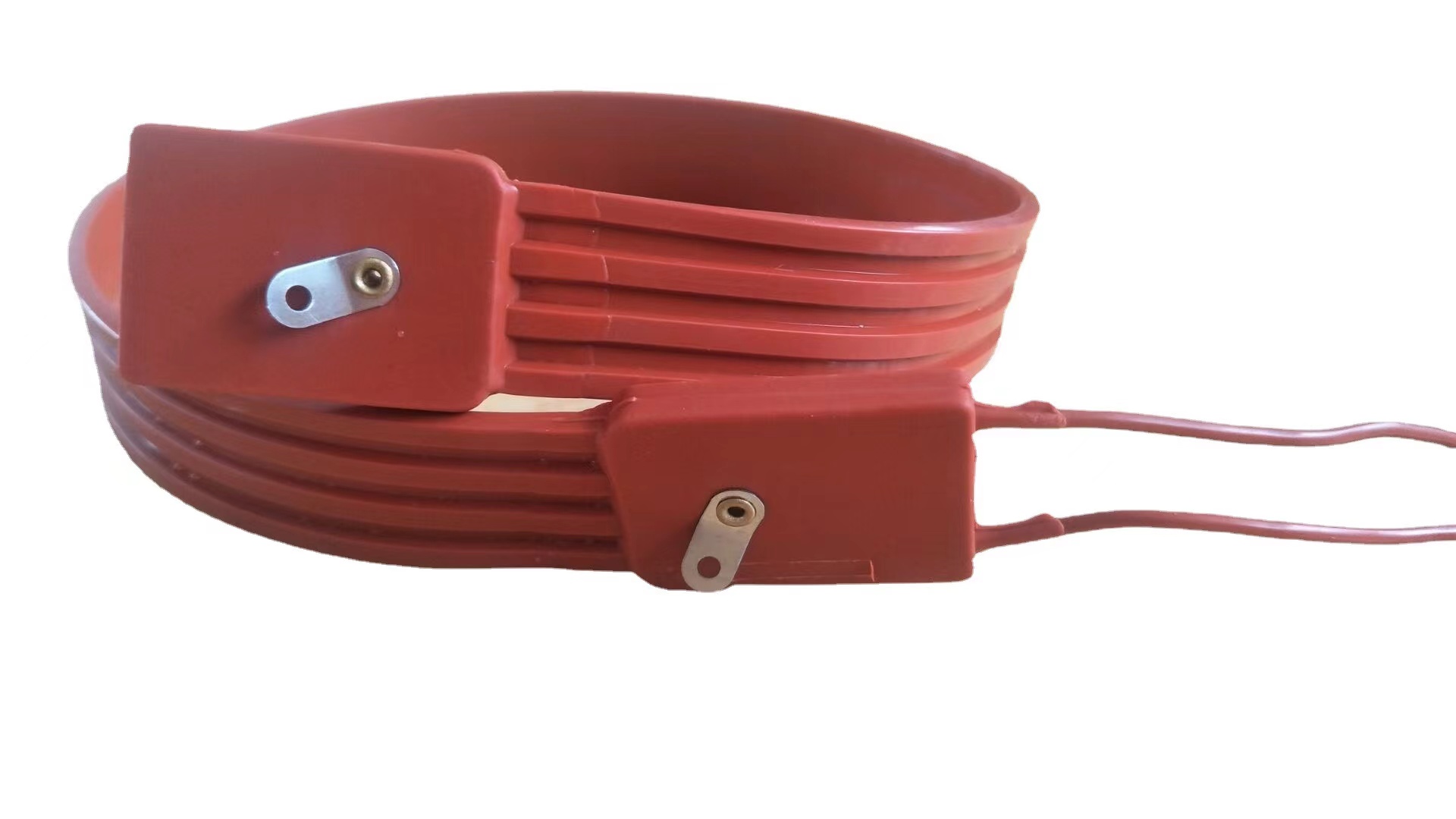Many air conditioning and refrigeration systems locate their condensing units outdoors for two main reasons. First, this takes advantage of the cooler ambient temperature outside to remove some of the heat absorbed by the evaporator, and second, to reduce noise pollution.
Condensing units usually consist of compressors, condenser coils, outdoor condenser fans, contactors, starting relays, capacitors, and solid state plates with circuits. The receiver is usually integrated into the condensing unit of the refrigeration system. Within a condensing unit, the compressor usually has a heater somehow connected to its bottom or to the crankcase. This type of heater is often referred to as a crankcase heater.
The compressor crankcase heater is a resistance heater that is usually strapped to the bottom of the crankcase or inserted into a well inside the compressor’s crankcase. Crankcase heaters are often found on compressors where the ambient temperature is lower than the system’s operating evaporator temperature.
The crankcase oil or oil of a compressor has many important functions. Although the refrigerant is the working fluid required for cooling, oil is needed to lubricate the moving mechanical parts of the compressor. Under normal circumstances, there is always a small amount of oil escaping from the crankcase of the compressor and circulating with the refrigerant throughout the system. Over time, the proper refrigerant speed through the system tubing will allow these escaped oils to return to the crankcase, and it is for this reason that the oil and refrigerant must dissolve each other. At the same time, however, the solubility of the oil and refrigerant can cause another system problem. The problem is refrigerant migration.
Migration is an aperiodic phenomenon. This is a process by which liquid and/or steam refrigerants migrate or return to the compressor’s crankcase and suction lines during the compressor’s shutdown cycle. During compressor outages, especially during extended outages, the refrigerant will need to be moved or migrated to where the pressure is lowest. In nature, fluids flow from places of higher pressure to places of lower pressure. The crankcase usually has a lower pressure than the evaporator because it contains oil. The cooler ambient temperature amplifies the lower vapor pressure phenomenon and helps condense the refrigerant vapor into the liquid in the crankcase.
The refrigerated oil itself has a low vapor pressure, and whether the refrigerant is in a vapor state or a liquid state, it will flow to the refrigerated oil. In fact, the vapor pressure of the frozen oil is so low that even if a vacuum of 100 microns is pulled on the refrigeration system, it will not evaporate. The vapor of some frozen oils is reduced to 5-10 microns. If the oil does not have such a low vapor pressure, it will vaporize whenever there is a low pressure or vacuum in the crankcase.
Since refrigerant migration can occur with refrigerant vapor, migration can occur uphill or downhill. When the refrigerant steam reaches the crankcase, it will be absorbed and condensed in the oil due to the miscibility of the refrigerant/oil.
During a long closed cycle, the liquid refrigerant will form a striated layer on the bottom of the oil in the crankcase. This is because liquid refrigerants are heavier than oil. During short compressor shutdown cycles, the migrated refrigerant does not have a chance to settle under the oil, but will still mix with the oil in the crankcase. During the heating season and/or colder months when air conditioning is not required, residential owners often turn off the power disconnect to the air-conditioning outdoor condensing unit. This will cause the compressor to have no crankcase heat because the crankcase heater is out of power. The migration of refrigerant to the crankcase will certainly occur during this long cycle.
Once the cooling season begins, if the homeowner does not turn the circuit breaker back on at least 24-48 hours before starting the air conditioning unit, severe crankcase foaming and pressurization will occur due to prolonged non-circulating refrigerant migration.
This can cause the crankcase to lose the proper oil level, also damage bearings and cause other mechanical failures within the compressor.
Crankcase heaters are designed to help combat refrigerant migration. The role of the crankcase heater is to keep the oil in the compressor crankcase at a temperature higher than the coldest part of the system. This will result in the crankcase having a slightly higher pressure than the rest of the system. The refrigerant that enters the crankcase will then be vaporized and driven back into the suction line.
During non-cycle periods, the migration of refrigerant to the compressor crankcase is a serious problem. This may cause serious compressor damage
Post time: Sep-25-2024






